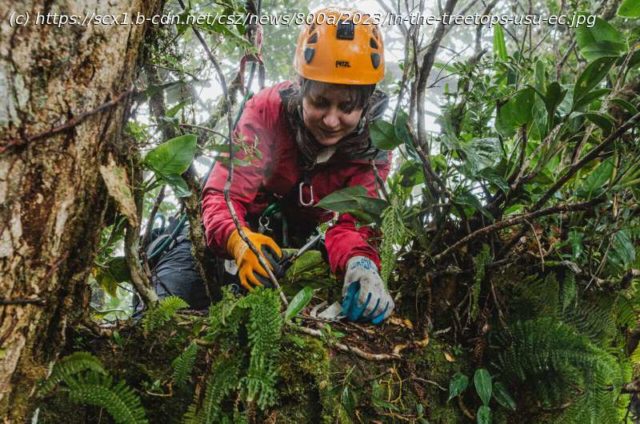When we think of soil, most of us think of dirt on the ground. But a surprising amount of the planet’s soil thrives in the treetops of old-growth forests, high above terra firma.
When we think of soil, most of us think of dirt on the ground. But a surprising amount of the planet’s soil thrives in the treetops of old-growth forests, high above terra firma.
This organic matter, composed of decaying leaves and branches, airborne particulates and moisture, is called canopy soil or arboreal soil. Its study is relatively new, says Utah State University ecologist Jessica Murray. She’s among researchers unraveling mysteries of the dense, mossy humus that provides rich habitat for insects, birds, fungi, worms and plants, as well as a generous reservoir for carbon storage.
Murray and colleagues from Texas A&M University, the University of Toronto Scarborough and Imperial College London published new information about the enigmatic resource in Geoderma. The team’s research was supported by USU, the U.S. Department of Agriculture National Institute of Food and Agriculture, and the Natural Sciences and Engineering Research Council of Canada.
„In this study, we sought to understand where canopy soils are found, where they are most abundant, and if their properties—and thus, soil development processes—differ as a function of climate or other small-scale factors,“ says Murray, a doctoral student in USU’s Department of Biology and Ecology Center. „This is the first study to look at the distribution patterns of canopy soils across forests and one of very few studies that have sought to examine canopy soil properties.“
Murray collected much of the data for the study some 80 feet above the ground at six primary forest sites across Costa Rica’s Cordillera de Tilarán and Cordillera Volcánica Central, encompassing both Caribbean and Pacific slope mountain ranges.






